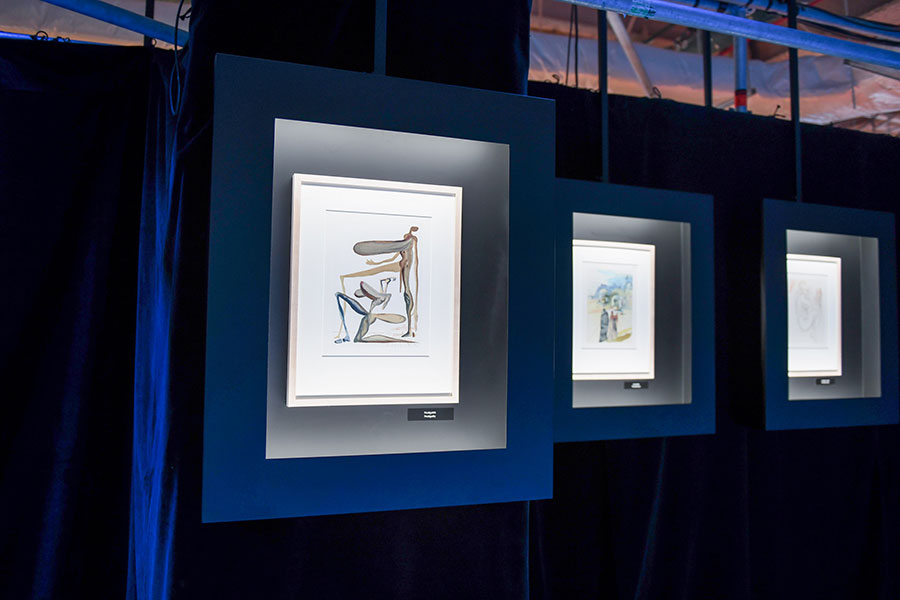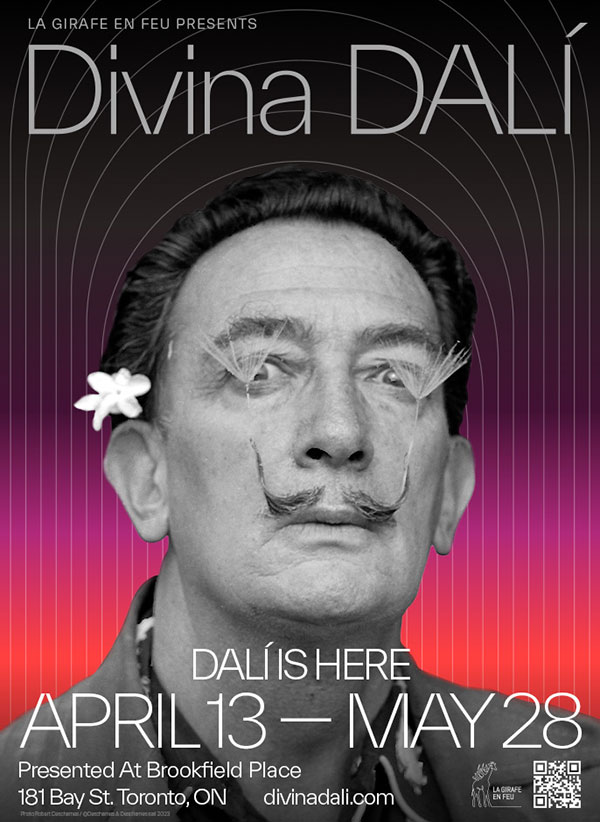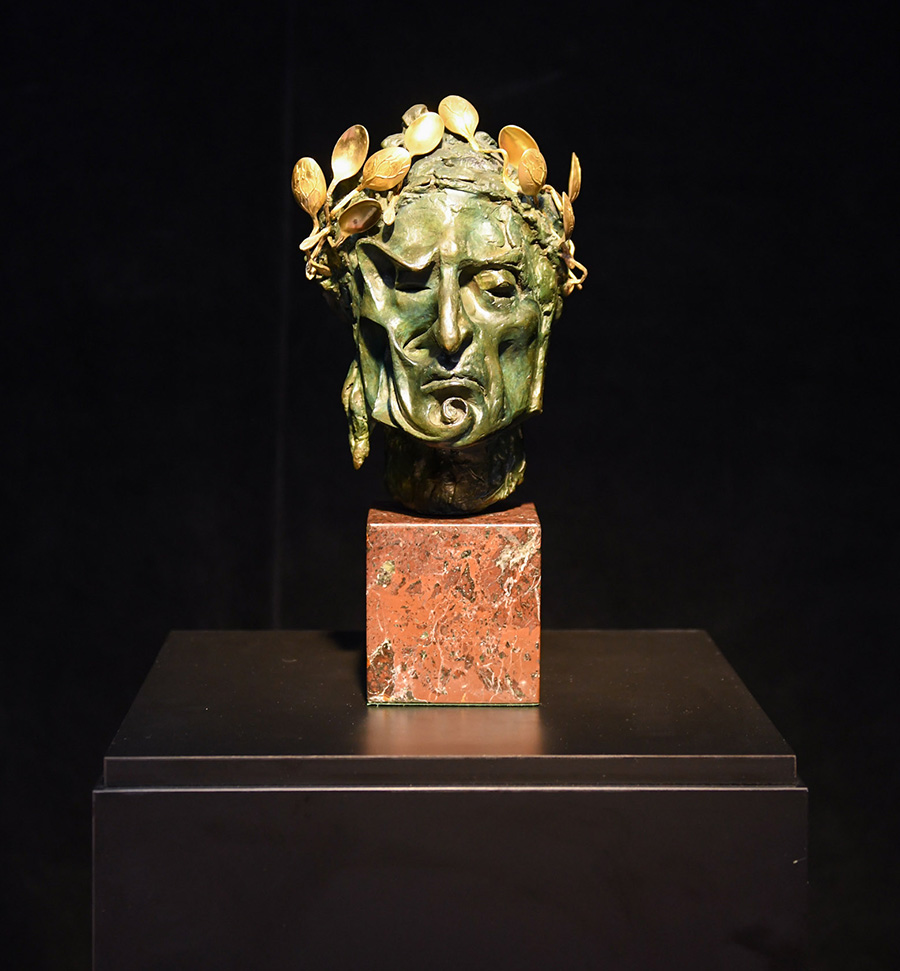‘Divina Dalí’ Exhibition Showcases Rare Salvador Dalí Works Inspired by Dante’s ‘Divine Comedy’

Salvador Dalí, seen here in a photo from the 1950s or 1960s, is being celebrated in a new Toronto exhibit that highlights his series of works inspired by Dante's 'Divine Comedy.' Photo: Bettmann/Getty Images
Divina Dalí, a superb new exhibition of the works of Salvador Dalí, shows that duets aren’t the sole domain of music. Given the right principals, collaborations can soar in literature and fine art, too. Even across millennia.
The exhibit, which opens April 13 at Toronto’s Brookfield Place (and runs until May 28), showcases 110 “rare masterpieces” by the famed surrealist painter that were inspired by another towering figure in European art — the Italian poet and philosopher Dante Alighieri.
The works are drawn from the private collection of Frank Hunter, Dalí’s official archivist and long-time friend, who worked with the painter until his death in 1989 at age 84. Hunter serves as guest curator on the exhibition, presented by La Girafe en feu, whose CEO Félix Bélanger is both a huge Dalí fan and the creative producer for the Toronto exhibit — which arrives with a heck of a backstory.
In 1950, Italy commissioned Dalí, then in the august years of his global fame, to commemorate Dante by creating a series of illustrations celebrating the writer’s 12th century epic narrative poem Divina Comedia, better known as the Divine Comedy.
Dalí started the project but the Italian public — scandalized by the idea of a Spaniard fêting the man who’d put the Italian language on the literary map by refusing to write in the fashionable Latin of the day — were not having it. Protests ensued.
The commission was cancelled, but Dalí, beguiled by Dante’s labyrinthine written odyssey, kept going, using the Divine Comedy as inspiration for his alternately beautiful, harrowing and, yes, surreal paintings and pen-and-ink illustrations, each depicting a scene inspired by, and named for, the text. They form the basis of Divina Dalí, with the 90-minute viewing experience correctly billboarded as an “awe-inspiring journey from the depths of hell to the heights of heaven.”
As with the Divine Comedy, the works in Divina Dalí are thematically organized into three sections: Inferno, Purgatory, and Paradise. Program notes explain that “For the next nine years [after the cancelled commission], Dalí immersed himself in the project, determined to create a masterpiece that would rival the Divine Comedy itself. With 100 watercolours and illustrated prints from an innovative woodblock method, Dalí unleashed his creative genius to bring Dante’s work to life.”

Indeed, he did. Exhibit visitors further learn that “Dalí presented the works in 1960 at the Musée Galliera in Paris. The publishing house Les Heures Claires acquired the rights and published two series in six volumes, which are considered to be the most remarkable works of the century. These works are also presented in a German and Italian version, the latter being the version that is exhibited in Divina Dalí.” An original poster advertising that 1960 Paris exhibition is among several ancillary items showcased.
So, what would the famed surrealist painter have made of the display now showing in Toronto after a Montreal run? “That’s a major question. I wish I could invite him,” laughs lead curator Raynald Michaud during a media preview held in Toronto a few days before the public opening.
“This isn’t just paintings on the walls. There’s an ambiance to this. Dali worked in movies” — most notably creating the dream sequence for Alfred Hitchcock’s 1945 film Spellbound — “and I think he would appreciate being immersed in the other worlds these three spaces create. I think he would enjoy it a lot, especially the music.”

Michaud tasked Quebec composer Yan Veillette with creating instrumental pieces to soundtrack Divina Dalí. “The ambiance had to match the space, each of which is very different,” Michaud explains. “I wanted the music in the Inferno section to be stressful. In Purgatory, it’s more relaxed.”
Michaud continues: “Paradise was the hardest for Yan because I told him, ‘I don’t want to hear music that reminds me of a spa.’ He did it very well.” In the exhibit, dramatic lighting works with the music to create and sustain a transcendental mood.
Though he is the proverbial headliner, Dalí isn’t the only artist visitors enjoy when entering the space at Brookfield Place, formerly the site of the Marché restaurant. Quebec’s Lisabel and Toronto’s Peter Triantos both showcase Dalí-inspired original works; a telephone booth transformed by artist Stéphane Cocke into a “Telepoeme” booth (pick up the receiver, drop in a loonie, and hear Dalí ephemera) amps up the interactivity.
Also on display is a bronze sculpture of Dante by Dalí, circa 1964, showing the poet wearing a laurel wreath crown made of silver spoons with gold plate. The piece, Bélanger told CTV News, had been in a private collection, hasn’t been seen for more than 50 years, and has never before appeared in North America.

“In their own way, Dante and Dalí blur the line between dream and reality,” a didactic panel at the start of the exhibition notes. “The two artists herald a rebirth that lays the foundations for a universal beauty, and the source of this universal beauty is the inner truth shared by every human. Divina Dalí brings to light the link between Dante and Dalí, a link that lies in introspection and reveals our ‘hidden ideal.’”
Or, at the very least, it represents an excellent way to spend an afternoon.
Divina Dalí runs daily, excluding Mondays, until May 28 (and may be extended) at Brookfield Place. Click here for more information.
RELATED:
Basquiat: A Multidisciplinary Artist Who Denounced Violence Against African Americans
E.J. Hughes: Exploring the Art, and Legacy, of One of Canada’s First War Artists
The Artistry of Leonard Cohen to be Celebrated in New Art Gallery of Ontario Exhibition